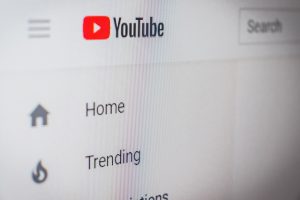Live streaming on YouTube has become a popular way for creators to connect with audiences in real-time. Especially during the pandemic, when physical interactions were limited, the platform served as a conduit for lively and engaging digital communities. Its growing popularity demonstrates the real and immediate connections it enables, bridging geographical and social gaps like never before.
Live streaming has a significant impact on personal growth and branding for both individuals and businesses. It allows creators to showcase authenticity, receive immediate feedback, and build a community. The real-time interaction creates a unique content creation and consumption experience, increasing engagement and fostering a deeper connection between creators and their audience. Many have discovered the power of live streaming on YouTube as a tool for expression, learning, and building a loyal following. If you’re new to live streaming, here’s a comprehensive guide to get you started in 2023.
Why Live Stream on YouTube?
Live streaming on YouTube offers a plethora of benefits for content creators. Below are some of the top benefits you can expect from live streaming on the platform:
The Power of Live Interaction
The allure of real-time interaction through live streaming on platforms like YouTube lies in its ability to foster a genuine connection between creators and viewers. Unlike pre-recorded content, live streaming enables immediate feedback, making the audience an active participant in the discourse. This dynamic has proven to significantly enhance engagement rates. According to a study by Livestream, live content holds viewers’ attention 10 to 20 times longer than recorded content.
One notable instance that showcases the impact of live interaction is a gaming channel’s live stream, which garnered high viewer engagement. The real-time discussions and reactions during the live game-play created a shared experience, making the content more relatable and engaging. This interactive arena cultivates a sense of community, where viewers feel a stronger affinity towards the creator, thereby encouraging higher loyalty and repeat viewership. Through live streams, creators can also conduct Q&A sessions, obtain live reactions to new products or content, and even crowdsource ideas, making the content creation process more collaborative and interactive.
Monetization and Income Potential
Live streams on YouTube present an enticing income-generating avenue through features like Super Chat and advertisements. Super Chat allows viewers to pay a fee to have their messages highlighted during the live stream, creating a revenue stream for creators while enhancing viewer interaction. Besides, running ads during live streams can also generate significant revenue. Based on a recent blog post by YouTube, the number of channels making six figures annually on YouTube increased by 40% compared to the previous year.
The potential for earning through live streams has been demonstrated by numerous creators. For instance, a creator could accumulate substantial revenue through a single livestream event, sometimes even surpassing earnings from their pre-recorded content. These success stories are motivating a growing number of individuals and brands to explore live streaming as a viable income source. Moreover, the rise in live stream revenue also reflects the growing willingness of audiences to support creators monetarily, marking a shift towards a more direct creator-audience monetization model. The narrative of live streaming as both a community-building and income-generating platform is an attractive proposition for aspiring and established creators alike.
Preparing for Your First Live Stream
Embarking on the journey of live streaming on YouTube is an exciting endeavor that opens doors to a world of interactive content creation. Before you hit the “Go Live” button, there are several preparatory steps to ensure a smooth and professional streaming experience.
Setting Up Your YouTube Channel
If you’re new to YouTube, the first step is creating a channel. Begin by signing up for a Google account if you don’t already have one, as it’s requisite for accessing YouTube’s services. Once you have a Google account, navigate to YouTube, click on the user icon at the top right, and select “Your Channel”. Here, you’ll be prompted to create a new channel. You can set up a personal channel or a brand channel, depending on your preference. It’s advisable to choose a name that reflects your brand or the content you plan to share.
After creating your channel, it’s essential to optimize it for discovery and engagement. Fill out the “About” section with a compelling description, include links to your website or social media profiles, and upload a channel logo and cover art. Although not a requirement for live streaming, setting up these elements enhances your channel’s professionalism and appeal.
Selecting Equipment and Software
To commence live streaming, essential equipment includes a reliable computer, a quality webcam, and a good microphone. For beginners on a budget, there are several cost-effective options available. Webcams such as the Logitech C920 or the Microsoft LifeCam HD-3000 are reputable choices that offer good-quality video without breaking the bank. When it comes to microphones, the Blue Snowball iCE or the Fifine K669B are affordable options that provide clear audio.
On the software front, streaming software is necessary. OBS Studio is a popular free choice that supports live streaming on YouTube. It offers a range of features, including scene setup, audio mixing, and encoding settings, which are crucial for a successful live stream.
Planning Your Content
Content planning is pivotal to maintaining a coherent and engaging live stream. Determining the type of content to share – be it Q&A sessions, gaming streams, vlogs, or tutorials – is fundamental. Sketching out a rough outline or script can help keep the stream on track and reduce awkward pauses.
For diversified content, having a content calendar can be beneficial. For instance, a variety channel might schedule gaming streams on Mondays, live Q&A sessions on Wednesdays, and vlogging on Fridays. This not only helps to keep the content organized but also sets the audience’s expectations, thus building a consistent viewership. Through meticulous planning, you pave the way for a more structured and appealing live-streaming experience.
Going Live: Step-by-Step Guide
Using YouTube’s Live Studio
YouTube’s Live Studio is a user-friendly interface that facilitates the live streaming process. Here’s a simplified guide on setting up and starting a live stream on YouTube:
- Log in to your YouTube account and, click on the camera icon at the top right, then select “Go Live”.
- Navigate to the Live Studio, where you can create a new stream or manage scheduled streams.
- Enter your stream details, such as the title, description, and privacy settings.
- Set up your streaming software like OBS Studio, ensuring you copy the stream key from YouTube and paste it into your streaming software.
- Configure your audio and video sources within your streaming software, ensuring they are correctly capturing your webcam and microphone.
- Run a private test stream to check the audio, video, and internet connection.
- Once everything is set, click “Go Live” in YouTube’s Live Studio to start streaming to your audience.
Tips for a Successful Live Stream
Engagement is the cornerstone of a successful live stream. Below are some tips to enhance your live-streaming experience:
- Engage with the Audience: Regularly interact with your viewers by responding to comments, asking questions, and acknowledging super chats. Engagement fosters a community and encourages viewers to return.
- Manage Comments: Utilize moderation tools to manage comments, keeping the chat respectful and on-topic.
- Address Technical Issues Promptly: Be prepared for technical hitches and address them promptly to maintain the stream’s quality.
- Maintain Viewer Retention: Keep the content engaging, stay energetic, and consider using interactive elements like polls or Q&A sessions to maintain viewer interest.
Post-Live Stream: Managing and Promoting Your Content
The end of a live stream doesn’t signify the end of engagement with that content. There’s a wealth of opportunity in repurposing live content and continuing the dialogue with your audience post-stream. Here’s how to maximize the impact of your live-streaming efforts.
Repurposing Live Content
Repurposing live streams into shorter videos or other forms of content can extend the life and reach of your original content. By editing down the live stream into key takeaways, highlights, or bite-sized segments, you create more digestible content that may appeal to a wider audience or serve as a teaser to the full live stream. For instance, a 2-hour live gaming stream can be edited down to a 10-minute highlight reel showcasing the most exciting or funny moments.
Several creators have successfully embraced this strategy. By doing so, they manage to provide value in a concise format while driving traffic back to the original live stream or other content. A before-and-after comparison could show a lengthy live Q&A session being transformed into a series of short, thematic videos tackling individual questions, thus making the content more searchable and consumable.
Engaging with Viewers After the Stream
Maintaining the momentum post-stream is pivotal for building and sustaining a community. Engaging with viewers through comments on the live stream replay or on social media channels keeps the conversation going and demonstrates that you value your audience’s input. Responding to comments, addressing further questions, or even creating follow-up content based on the live-stream discussions are excellent ways to nurture viewer relationships.
For example, some creators host post-stream discussions on platforms like Twitter or Discord, creating a space for viewers to share their thoughts, ask further questions, or interact with each other. This ongoing engagement not only fosters a sense of community but also provides valuable insights for future content creation, helping to ensure your live-streaming efforts continue to evolve and resonate with your audience.
Measuring Success and Growth
The journey of live streaming is both about connecting with your audience and achieving specific milestones. Assessing the performance of your live streams and tracking the growth of your channel is integral to understanding your progress and making informed decisions for future content.
Analyzing Live Stream Metrics
Utilizing YouTube Analytics is crucial to measure the success of your live streams. This tool provides a plethora of data that can provide insight into how your live streams are performing. Key metrics include:
- Watch Time: This indicates the total number of minutes that viewers have spent watching your live streams. A higher watch time usually signifies that your content is engaging and resonates with your audience.
- Chat Engagement: Monitoring the chat engagement during your live streams can provide a glimpse into how interactive your audience is, which is a vital part of live streaming.
Tracking Subscribers and Income
Monitoring subscriber growth and income generated from live streams is another facet of measuring success. Both subscriber count and income are direct indicators of your channel’s growth and the value your live streams provide to your audience.
- Subscriber Growth: After each live stream, monitoring any spike in subscriber count can indicate the effectiveness of that particular live stream in attracting new audience members.
- Income Tracking: Through YouTube Analytics, you can track income generated from Super Chats, ads, and channel memberships during live streams.
Several creators have shared their growth stories online, showcasing how regular live streaming coupled with audience engagement has led to significant subscriber growth and income. For instance, a graph depicting the subscriber growth of a live streamer over time could demonstrate a direct correlation between the frequency of live streams and the rate of subscriber acquisition.
Staying Consistent and Adapting
The Role of Consistency
Regular live streaming establishes a predictable pattern that your audience can look forward to, which in turn fosters a loyal community. It also provides more opportunities for audience interaction, engagement, and, subsequently, channel growth. A success story that epitomizes this is of a vlogger who transitioned from an irregular live-streaming schedule to a consistent one, witnessing a notable increase in viewership and subscriber count over time. This transition underscored the vlogger’s commitment to their audience, which was reciprocated through higher engagement rates and a burgeoning community. The narrative illustrates how consistency can significantly impact a channel’s growth trajectory and viewer loyalty.
Adapting to Audience Feedback
Audience feedback is a goldmine of insights that can drive improvements in your live-streaming content. Being receptive to and acting upon feedback not only enhances the quality of your streams but also demonstrates respect for your audience’s opinions, fostering a deeper connection.
Numerous creators have evolved their live-streaming approach based on audience feedback. For instance, a side-by-side comparison of a creator’s live stream before and after implementing feedback-based changes could reveal enhanced engagement, better content structure, or improved audio-visual quality. These modifications, driven by audience input, not only elevate the live-streaming experience but also contribute to a culture of continuous improvement and audience-centric content creation. The iterative process of adapting to feedback, therefore, plays a quintessential role in aligning your live-streaming efforts with audience expectations and enhancing overall viewer satisfaction.
Embarking on the live streaming journey on YouTube is a dynamic way to foster real-time engagement and build a robust community around your content. The pathway to a successful live streaming channel hinges on thorough preparation, consistent broadcasting, keen analysis of performance metrics, and an open ear to audience feedback. As you navigate through the myriad aspects of live streaming elucidated in this guide, remember that the core essence lies in authentic interaction and a genuine desire to provide value to your audience, which in turn cultivates a thriving and loyal community.





